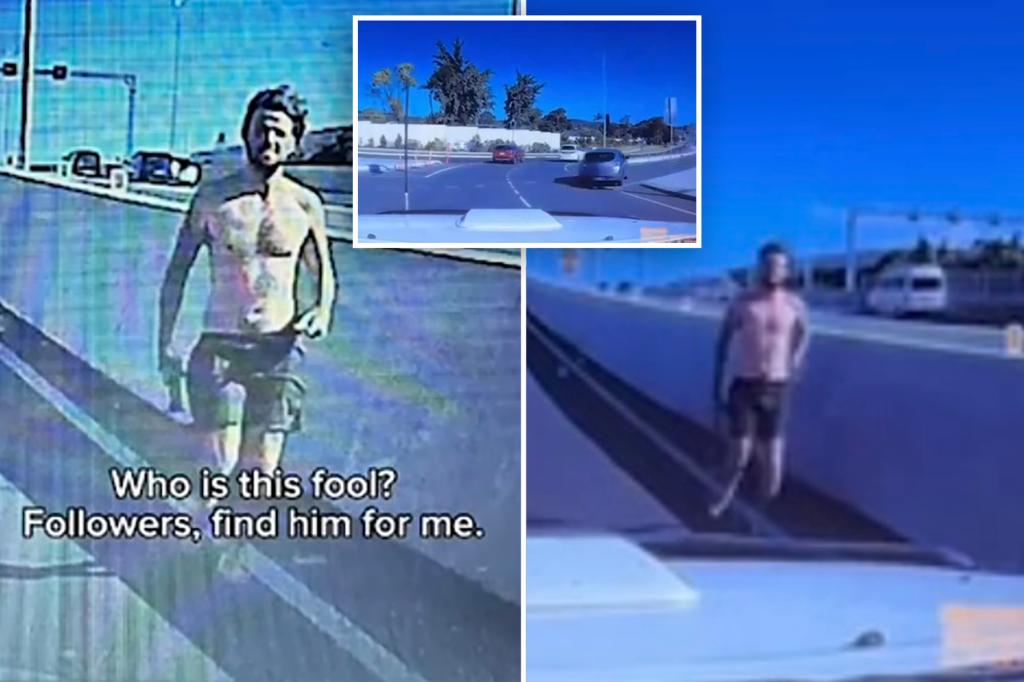The incident involving Steven Turnbull, popularly known as Croc Turnbull, unfolded on a Sunday afternoon on the Pacific Motorway (M1) in Brisbane, Australia. Turnbull, a renowned wildlife educator with a substantial following on social media platforms like Instagram and TikTok, found himself at the center of a road rage episode that quickly escalated into an alleged assault. Turnbull’s online presence is built around his engaging educational content featuring Australian wildlife, including kangaroos, snakes, crocodiles, and other native species. His videos offer insights into the behavior, habitats, and conservation of these animals, earning him a loyal audience. This incident, however, shifted the spotlight from his wildlife expertise to an unsettling encounter on a busy motorway.
The altercation began, according to Turnbull, with a traffic maneuver. As he attempted to merge onto the M1 via the Rochedale exit, a silver hatchback abruptly cut him off. Turnbull responded by honking his horn, a seemingly common reaction in such traffic situations. However, the driver of the hatchback reacted in an unexpected and aggressive manner. The driver, described as shirtless, brought the hatchback to a sudden stop on the busy motorway, an action that immediately posed a risk to himself and other drivers. He then exited his vehicle and approached Turnbull’s car, visibly agitated. Turnbull’s dashcam footage captured the initial moments of the confrontation, showing the hatchback driver approaching his vehicle.
Turnbull claims the driver was wielding a bong, a device typically used for smoking cannabis. The driver’s actions suggest a heightened state of agitation, potentially influenced by substance use. The verbal exchange between Turnbull and the hatchback driver escalated quickly, with the latter resorting to abusive language. The situation deteriorated further when the driver allegedly spat on Turnbull and his son, who was present in the vehicle. This act crossed the line from verbal confrontation to physical assault and understandably prompted Turnbull to raise his car window, seeking to protect himself and his son from further aggression. However, the driver’s aggressive behavior persisted. He allegedly attempted to smash Turnbull’s car window with the bong, an action captured by the dashcam as a sudden jolt and shaking of the camera’s view.
Although the alleged assault itself occurred off-camera, the audio from the dashcam recorded the raised voices and unintelligible conversation between Turnbull and the attacker. The audio, while unclear, reflects the heated nature of the exchange and provides auditory evidence of the escalating confrontation. After the attempted window smashing, the hatchback driver retreated to his own vehicle. The encounter, however, did not conclude there. The dashcam footage captured the subsequent actions of the hatchback driver, which further underscored the dangerous and erratic nature of his behavior.
As both vehicles began to move forward, the hatchback driver executed a reckless maneuver. He abruptly crossed two lanes of traffic, disregarding the safety of other motorists, and then began driving against the flow of traffic on the wrong side of the road. This act demonstrated a blatant disregard for traffic laws and placed other drivers at significant risk of a collision. The driver’s decision to flee the scene in such a dangerous manner suggests an attempt to evade potential consequences for his actions.
The entire incident, from the initial traffic dispute to the alleged assault and subsequent reckless driving, was captured by Turnbull’s dashcam. This footage serves as crucial evidence of the events that transpired and supports Turnbull’s account of the road rage incident. The footage has been shared with law enforcement authorities and is likely to be instrumental in their investigation of the incident. The video evidence provides a clear visual record of the hatchback driver’s dangerous driving behavior, his aggressive actions towards Turnbull and his son, and his subsequent attempt to flee the scene in a reckless manner.
This incident highlights the potential dangers of road rage and the unpredictable behavior of individuals involved in such confrontations. The incident underscores the importance of remaining calm and composed in traffic situations, avoiding escalation, and prioritizing personal safety. It also serves as a reminder of the value of dashcam footage in documenting such incidents and assisting law enforcement in their investigations. The incident involving Croc Turnbull, a well-known wildlife educator, serves as a cautionary tale about the unpredictable nature of road rage and the importance of maintaining vigilance and prioritizing safety on the road. The incident also emphasizes the role of technology, such as dashcams, in providing crucial evidence in such situations and aiding the pursuit of justice.
The incident involving Croc Turnbull serves as a powerful reminder of the dangers lurking on our roads, dangers that extend beyond simple traffic accidents. Road rage, fueled by impatience, anger, or other emotional factors, can transform a minor traffic inconvenience into a serious and potentially life-threatening situation. In Turnbull’s case, a simple act of honking his horn at a driver who cut him off escalated into a violent and dangerous encounter. This incident underscores the importance of managing our emotions while driving, understanding that aggression and retaliation can have severe consequences.
The incident also sheds light on the value of dashcam technology in documenting such events. The dashcam footage captured the entire sequence of events, from the initial traffic maneuver to the hatchback driver’s aggressive behavior and subsequent reckless escape. This video evidence is invaluable in corroborating Turnbull’s account of the incident and will likely play a critical role in any legal proceedings that may follow. The footage provides an unbiased record of the events, eliminating any ambiguity or he-said-she-said disputes that might otherwise arise. This incident, therefore, serves as a strong endorsement for the use of dashcams as a safety and evidentiary tool for drivers.


